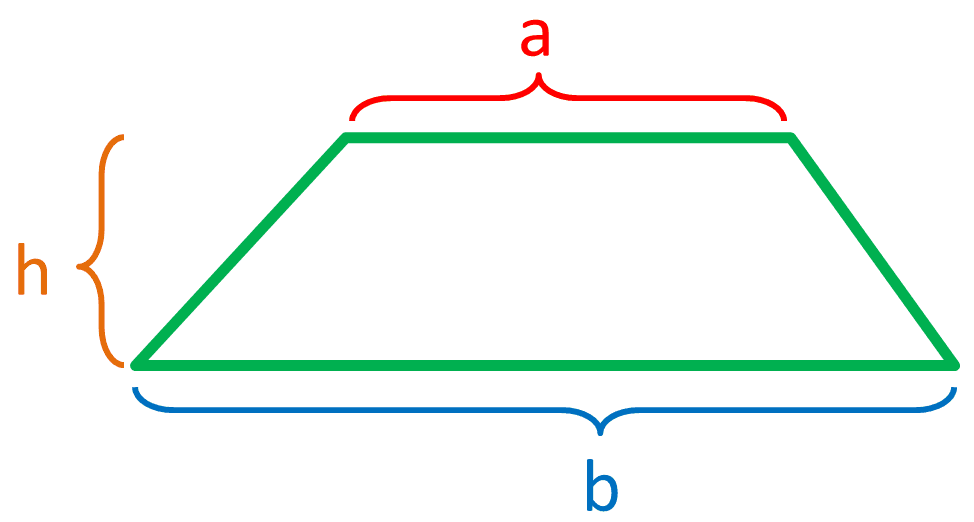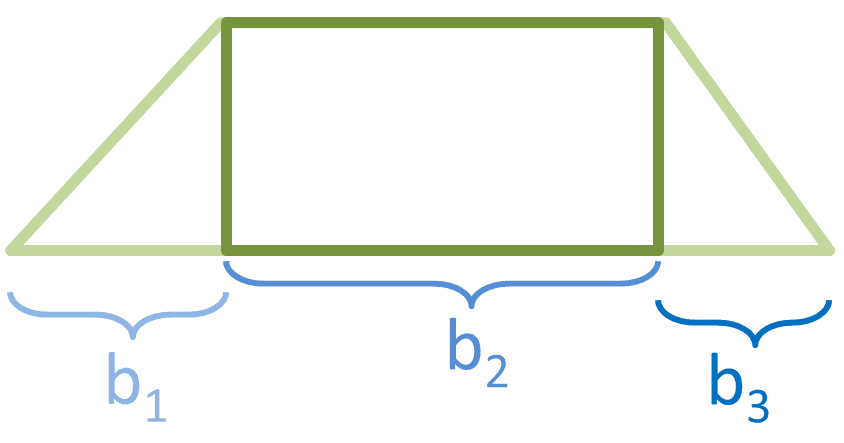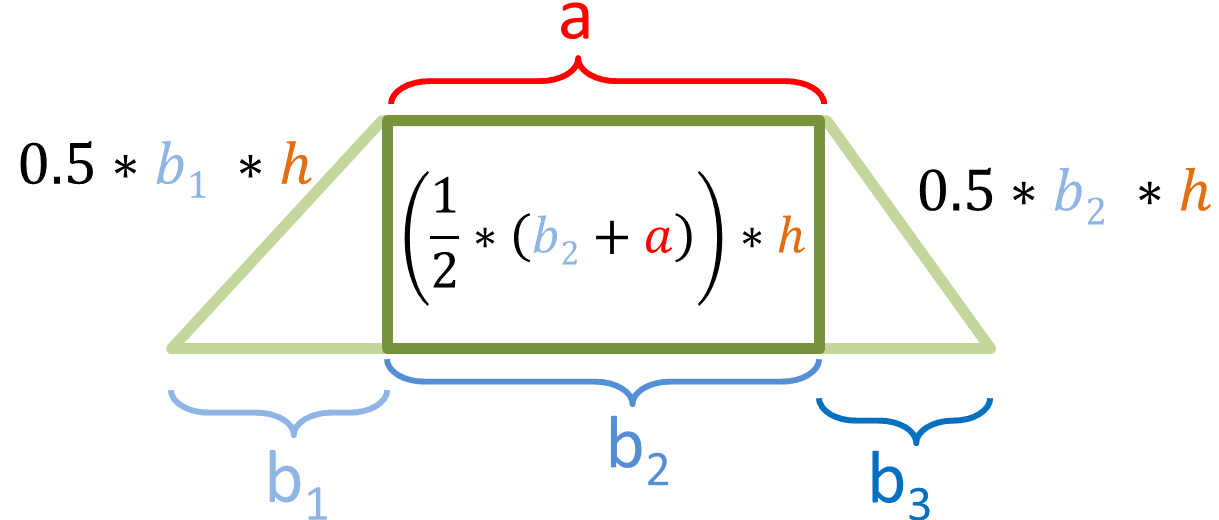You must already know that the area of a triangle is the half times base times height, if not then click here. Now here is a random trapezium with height h, top side a and bottom side b:

We can image this as two triangles and one rectangle, and we can also divide the base for each shape:

The area of the first triangle is [1/2 * b1 * h], the area of the second triangle is [1/2 * b3 * h], and the area of the middle rectangle is [b2 * h]. We can also write b2 as [1/2 * (b2 + a)], since a is the same as b2:

The total area of this shape is [(1/2 * b1 * h) + ((1/2 * (b2 + a)) * h) + (1/2 * b3 * h)], we can rewrite this as [1/2 * h * ( b1 + b2 + a + b3)]. Since the bottom side b is [b1 + b2 + b3], we can write the area as [1/2 * h * (b + a)].